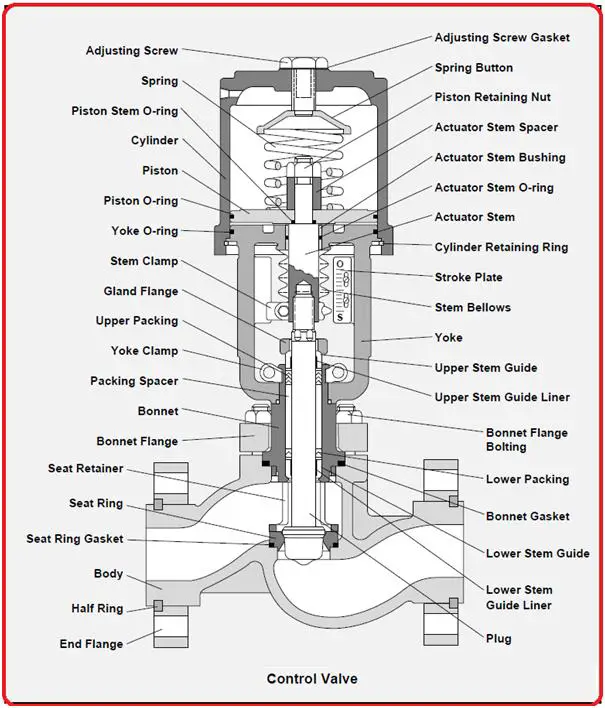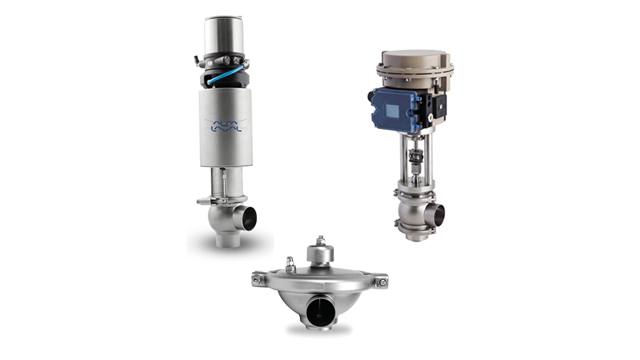Enhancing Operational Performance with Advanced Control Valves
Enhancing Operational Performance with Advanced Control Valves
Blog Article
Achieve Seamless Combination and Control With High Quality Building Automation Controls
In the realm of modern-day building monitoring, the value of high quality building automation controls can not be overemphasized. As innovation continues to breakthrough, the combination and control of different systems within a structure have actually advanced to be a lot more advanced and efficient. The seamless procedure and tracking of lights, A/C, safety and security, and various other building functions have actually ended up being extremely important for improving occupant convenience, energy effectiveness, and overall functional efficiency. The journey in the direction of achieving true assimilation and control is a multifaceted one, with factors to consider varying from system compatibility to cybersecurity. Embracing high quality structure automation controls is not just an issue of convenience however a critical essential for organizations aiming to enhance their centers' efficiency and sustainability.

Evolution of Structure Automation Controls
Throughout the previous few years, the development of building automation controls has considerably changed the way structures are handled and operated. Developing automation systems largely focused on fundamental features such as managing home heating, air flow, and air conditioning (COOLING AND HEATING) systems. However, as modern technology progressed, these controls have actually become extra innovative, permitting a bigger range of building systems to be integrated and managed centrally.
The evolution of building automation controls has seen a shift towards more smart systems that can adapt to altering conditions in real-time. This versatility is crucial for optimizing energy efficiency and ensuring resident comfort. Furthermore, contemporary building automation controls now supply attributes such as anticipating upkeep, remote tracking, and data analytics, allowing facility supervisors to make data-driven choices to boost building performance.

Advantages of Top Quality Integration
The advancement in building automation manages in the direction of more intelligent systems has highlighted the substantial advantages of quality integration in enhancing building procedures and boosting total performance. This central control also offers much better exposure and understandings into building performance, allowing positive maintenance and optimization approaches. Overall, the benefits of quality integration in building automation controls are indisputable, using boosted performance, convenience, and functional performance.
Enhanced Individual Experience and Ease Of Access
Enhancing customer communication with structure automation regulates via intuitive style and improved availability raises the overall experience for residents and facility supervisors alike. By concentrating on individual experience, developing automation systems can end up being much more user-friendly and efficient. Instinctive user interfaces, clear navigation, and customizable setups encourage individuals to communicate with the controls easily and effectively.
Availability functions play an important role in ensuring that all people, including those with handicaps, can use the building automation regulates with simplicity. Incorporating attributes such as voice commands, tactile switches, and color-contrasted screens can enhance access and make the controls discover here a lot more comprehensive.
Furthermore, boosted individual experience leads to greater user satisfaction, raised efficiency, and better decision-making. Occupants can change environmental setups according to their choices, while facility managers can successfully take care of and check building systems - control valves. In general, focusing on user experience and access in building automation controls adds to a more productive and smooth structure environment for all stakeholders entailed
Lasting Practices Via Automation

Moreover, automation can assist in the assimilation of renewable power sources such as solar panels or wind turbines right into structure procedures. Via automation, structures can straighten with modern sustainability goals and add to a greener future.
Future Trends in Structure Control Systems
One popular fad shaping the future of structure control systems is the boosted integration of Artificial Knowledge (AI) and machine learning. Furthermore, the Internet of Things (IoT) you could try this out is revolutionizing structure control systems by connecting sensors and tools to enhance and enhance operations effectiveness.
Another key pattern is the focus on cybersecurity actions to safeguard versus potential dangers to constructing automation systems. As buildings end up being extra interconnected, guaranteeing durable cybersecurity methods will be important to safeguard sensitive information and protect against unauthorized access.
Moreover, the shift towards cloud-based platforms is obtaining energy, enabling streamlined control and remote access to structure systems. This promotes easier monitoring, upkeep, and updates, boosting the total efficiency and adaptability of building control systems. As technology continues to advancement, these patterns are anticipated to shape the future landscape of building automation controls, driving advancement and sustainability in the developed atmosphere.
Final Thought
Future trends in structure control systems are likely to focus on more improving automation abilities for improved power performance and general efficiency. It is necessary for building proprietors and drivers to prioritize the fostering of high quality building automation regulates to enhance structure operations and attain long-lasting sustainability goals.
In the world of modern structure management, the significance of high quality building automation controls can not be overemphasized. In general, the advancement of building automation regulates continues to drive technology in the building monitoring industry, supplying new possibilities for producing smarter and more lasting buildings.
The development in structure automation controls in the direction of even more smart systems has actually emphasized the considerable advantages of quality combination in maximizing building operations and boosting overall effectiveness. On the whole, prioritizing individual experience and access in building automation manages adds to a more seamless and effective building atmosphere for all stakeholders included.
It is important for building proprietors and drivers to focus on the adoption of quality building automation manages to maximize structure operations and attain more information lasting sustainability goals. - control valves
Report this page